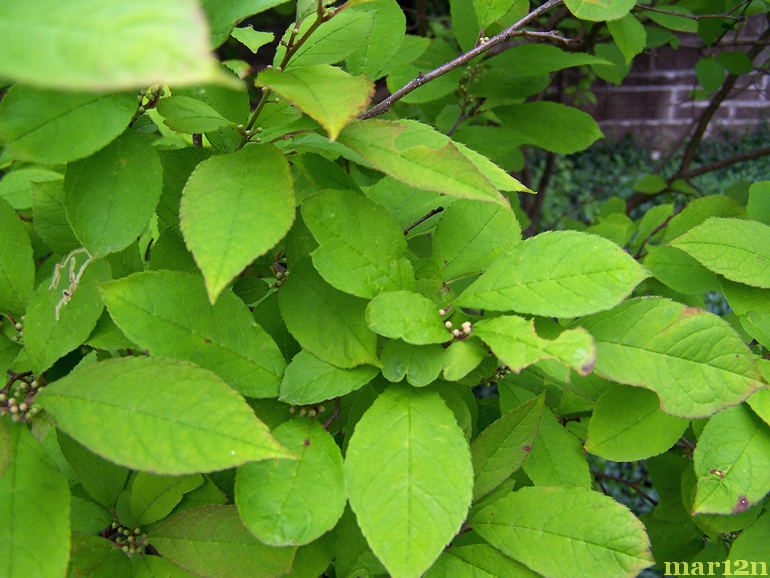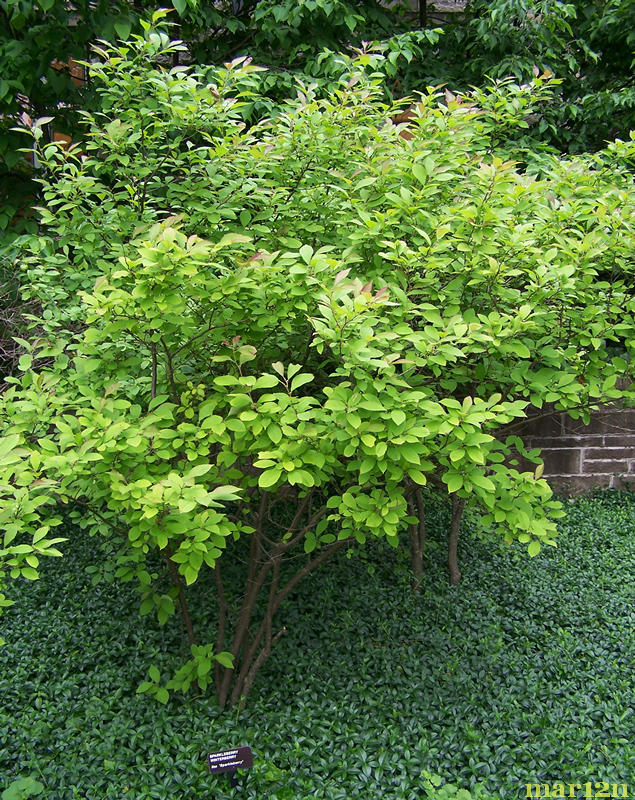 |
Sparkleberry Winterberry Ilex verticillata 'Sparkleberry' Winterberry is native to eastern North America into southern Canada. |
Custom Search
|

|
|
Winterberry is an American native, growing from southern Alabama north to the Maritime Provinces of Canada and east to Minnesota. It is a deciduous, multi-stemmed shrub reaching about 10 feet in height. The plant is cultivated primarily for its bright-red winter persistent fruit. Often found along forest borders or in swamps, winterberry is more tolerant of wet soils.
'Sparkleberry' winterberry is an award-winning cultivar developed at the National Arboretum, highly prized for it wildlife-attracting plump red berries and dense, rounded form. As are all members of the holly family, only female plants bear fruit, and these rely on cross-polination from a male plant. Winterberry likes full sun but will tolerate some shade, prefers moist, slightly acidic soil. Will tolerate poor drainage. Multi-stem habit tends to suckering and the whole thing can get messy if allowed to proliferate. |
|
Winterberry, American holly, and English holly (Ilex aquifolium) are all species having male and female flowers borne on separate plants (dioecious). Pollen transfer from a male to a female plant is known as cross-pollination, usually accomplished by insects including bees, wasps, ants, yellowjackets, and night-flying moths. If a holly plant fails to produce berries, it is either a male, or an unfertilized female plant. To insure good berry production, it is suggested at least one male plant for every three females be planted within 200 feet.
Because of a good taproot and a profilic lateral root system, young winterberries can be transplanted without much difficulty. Transplanting should be done during the dormant season, usually November through March. Small plants may be dug bare-rooted if roots are kept moist, but larger plants should be balled and burlapped. When wild winterberries are transplanted from the woods, tops should be severely pruned and most of the remaining leaves removed. Small trees should be allowed to flower before transplanting to ensure the selection of fruit-bearing individuals [1]. |
| References: 1. H.E. Grelen, USDA Forest Service Silvics manual Vol 2, 'Ilex opaca Ait. American Holly.' |
| Tree Encyclopedia / North American Insects & Spiders is dedicated to providing scientific and educational resources for our users through use of large images and macro photographs of flora and fauna. |
| Tree Encyclopedia Explore over 2,000 large format pictures of trees in more than 500 species. Our extensive catalog contains the largest catalog of flowering crabapples on the net – over 40 varieties, in flower. Find extensive descriptions and landscape planning information. Leaves, foliage, bark detailed in pictures. Tree Encyclopedia | Tree Index | Holly & Winterberry |

